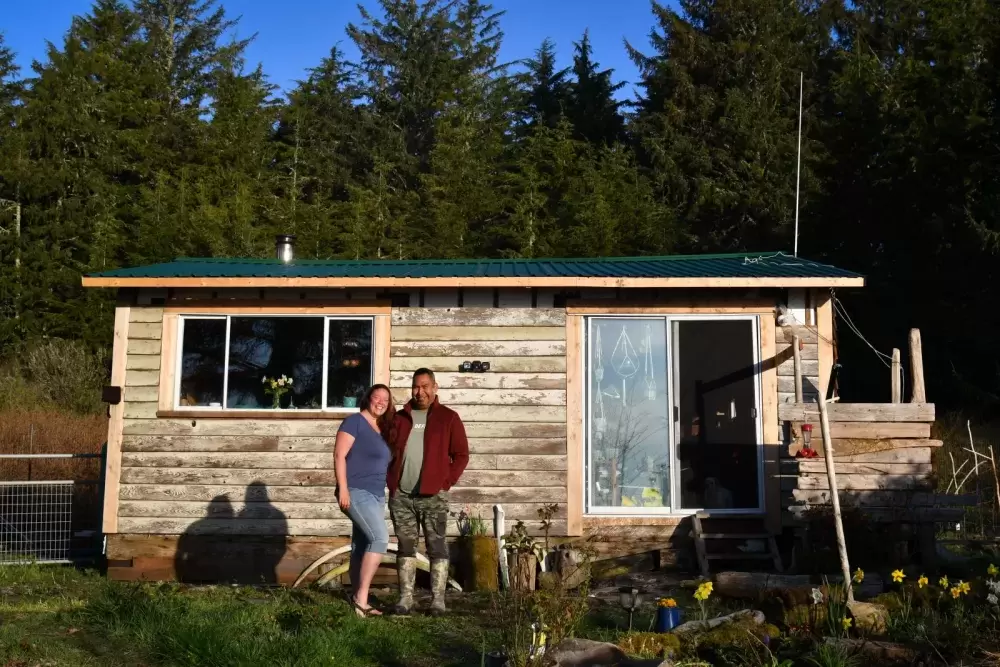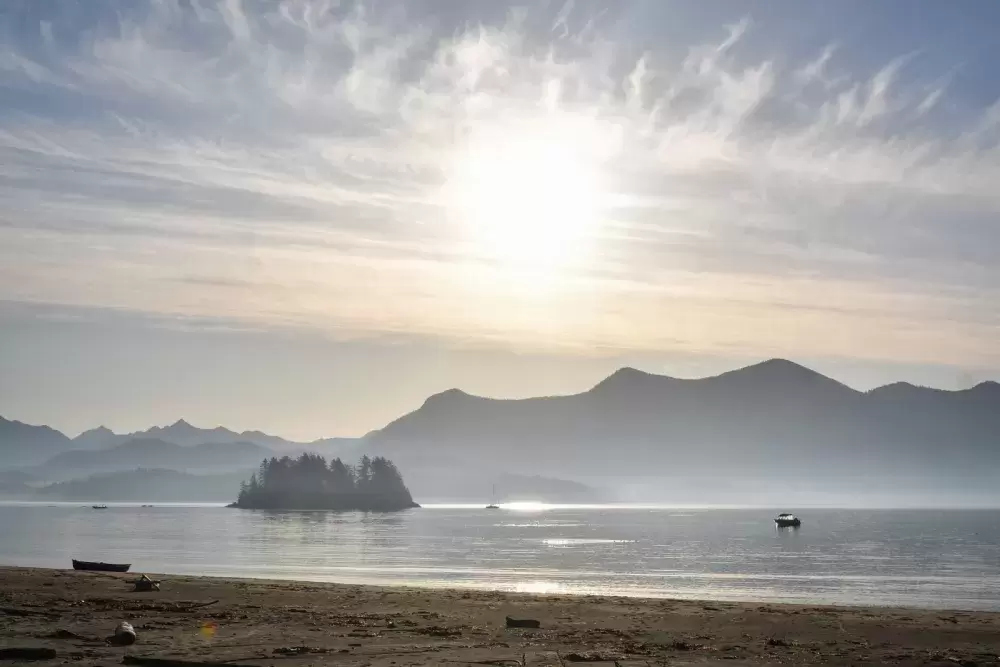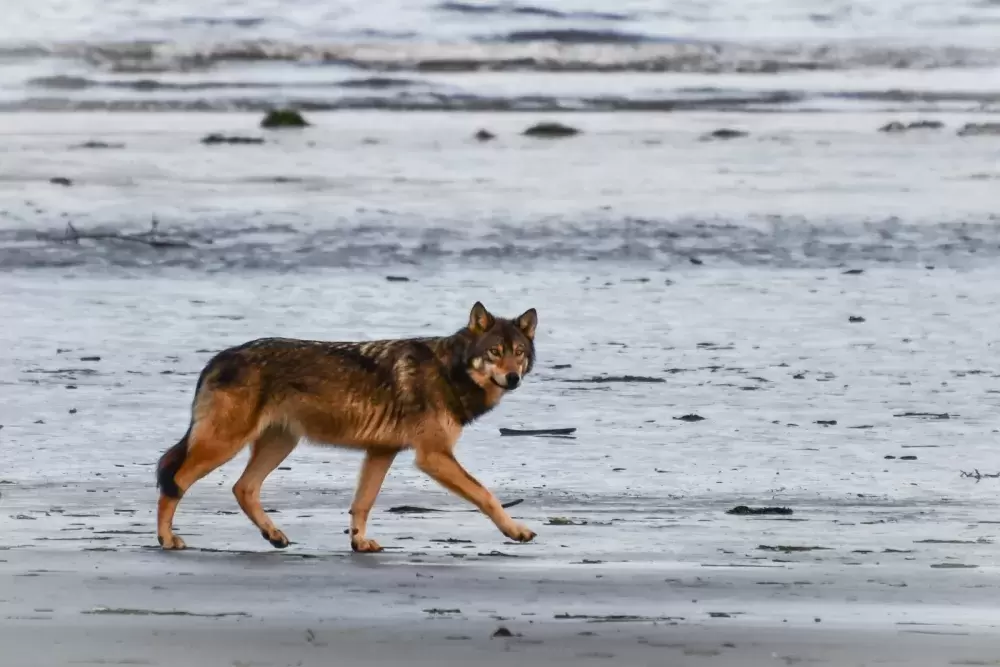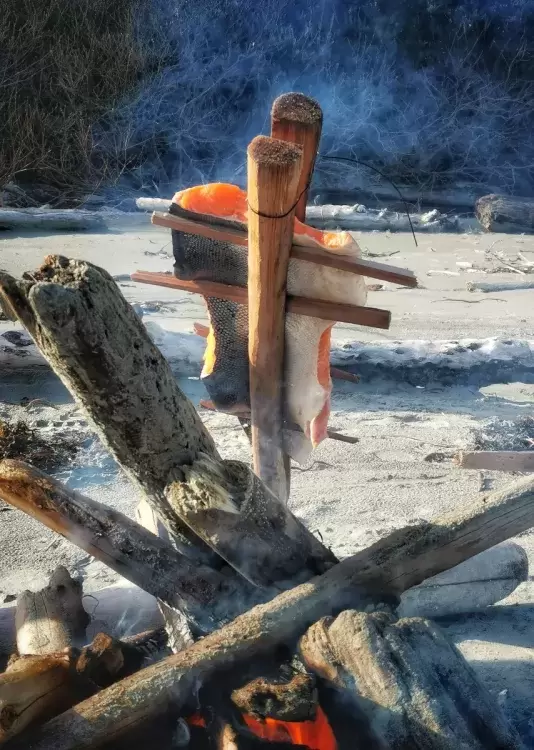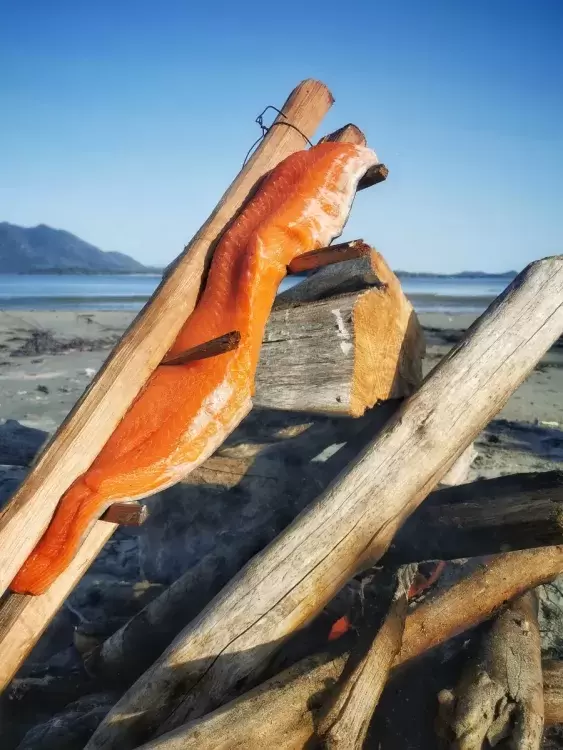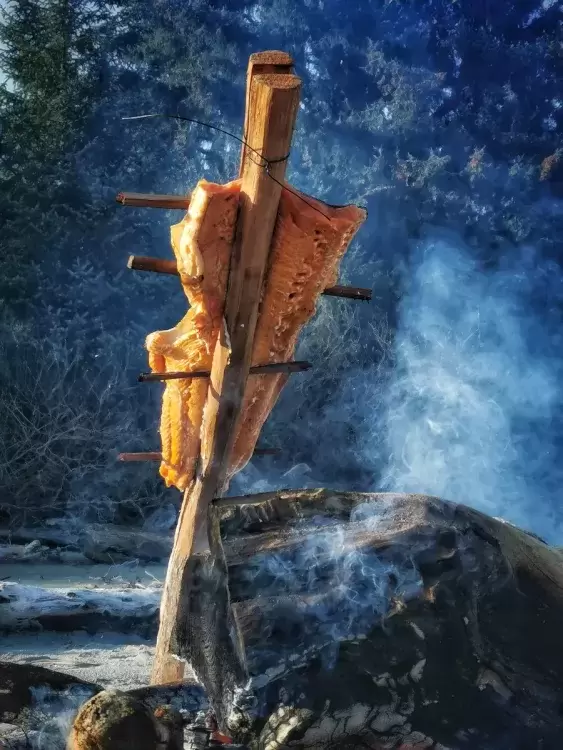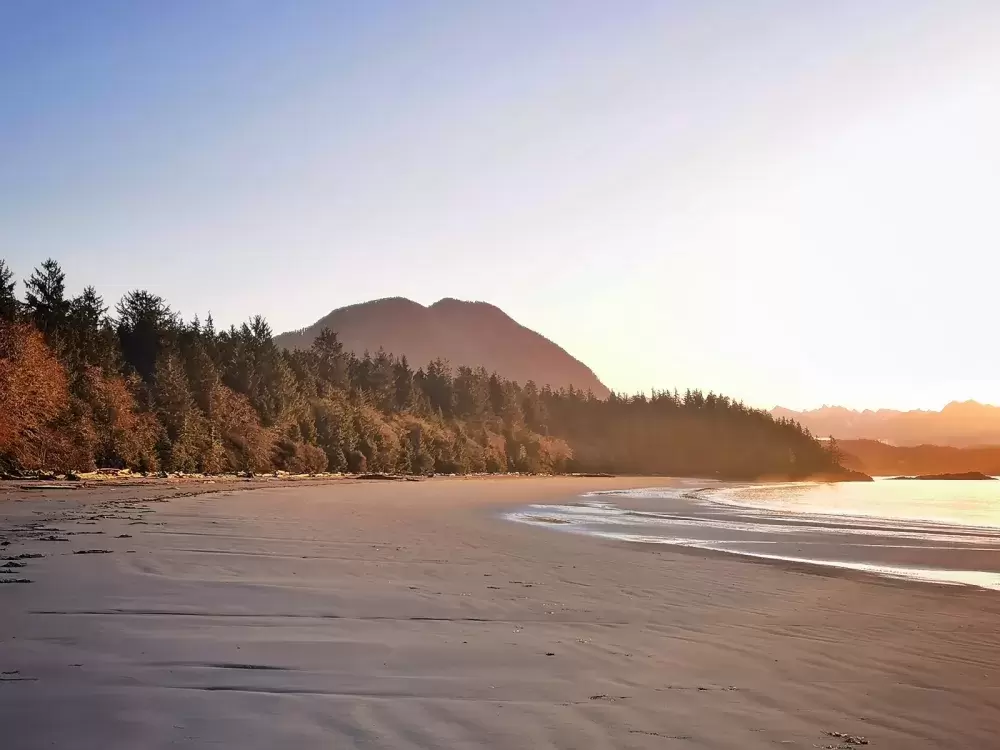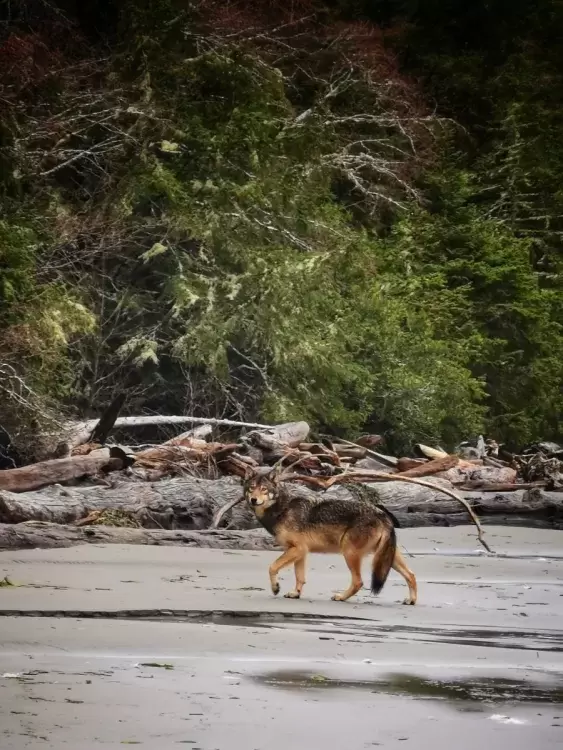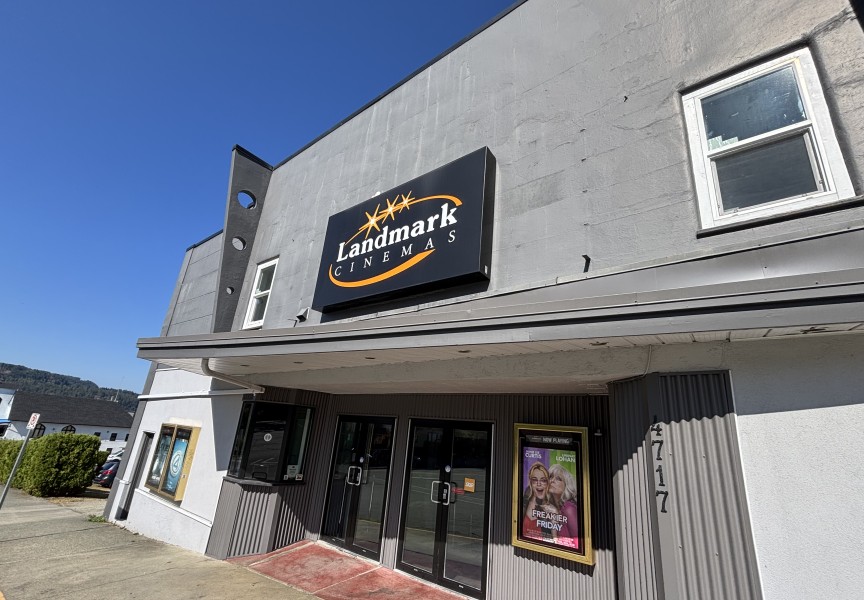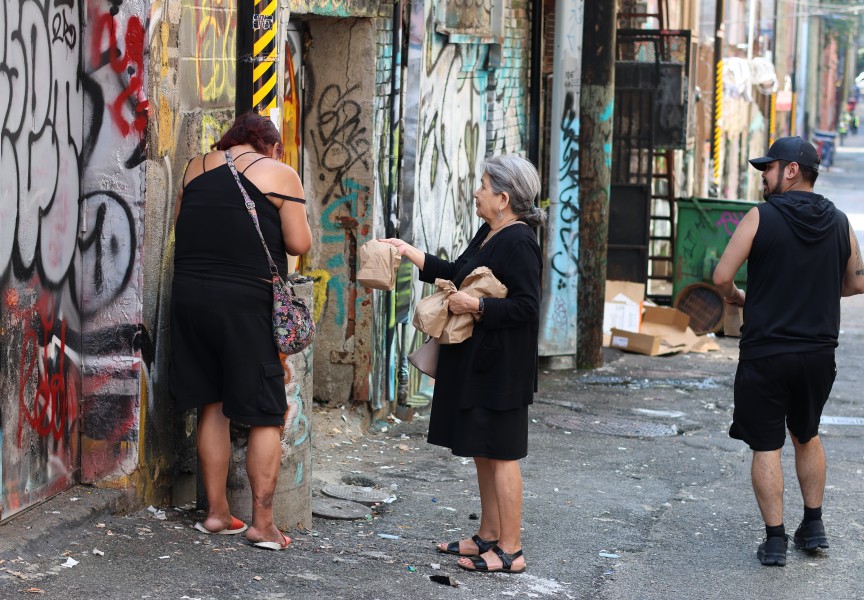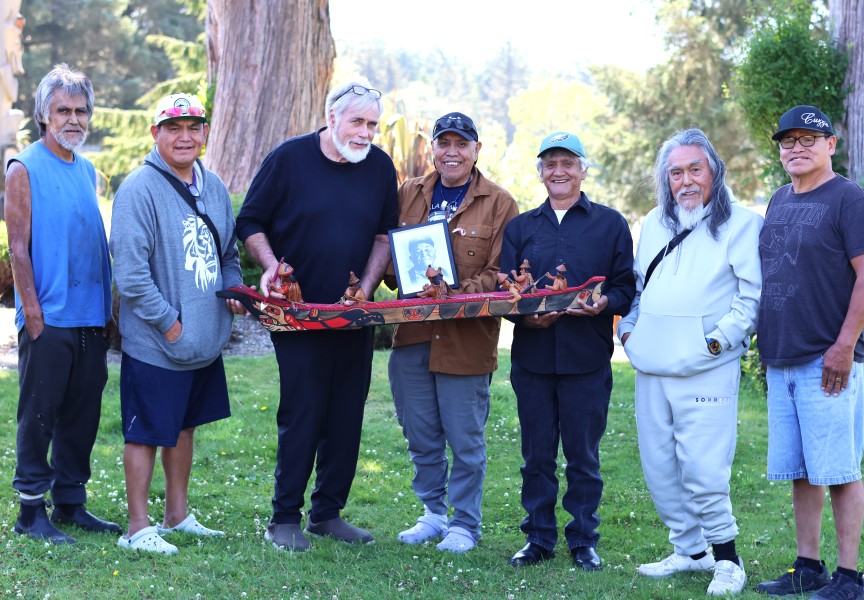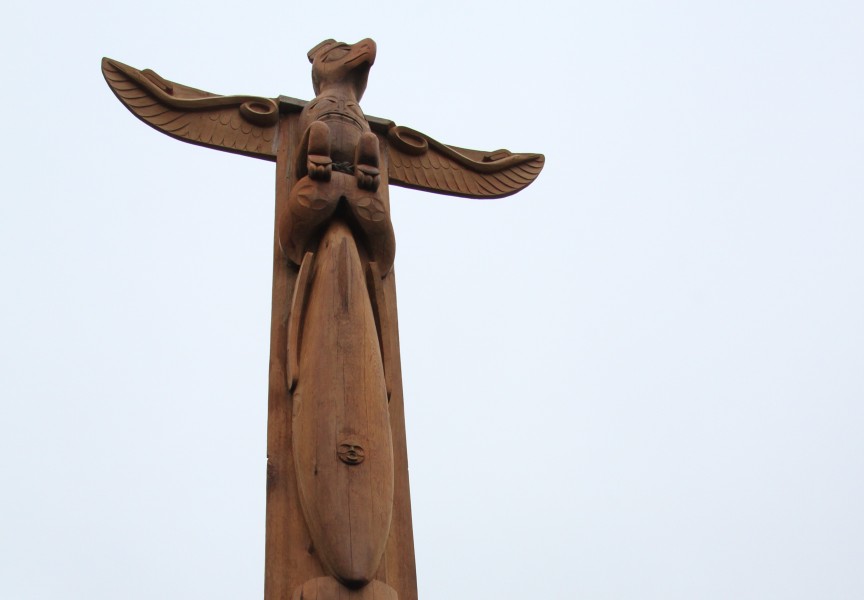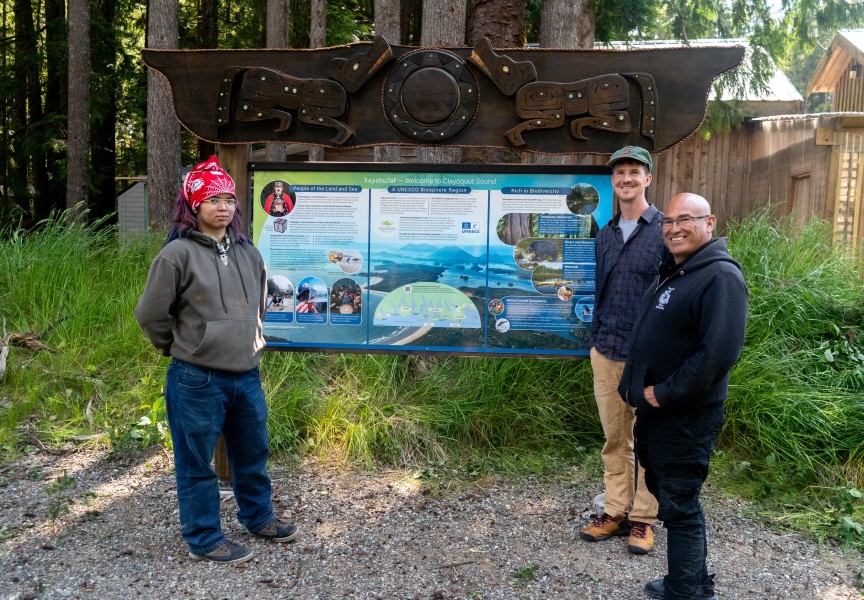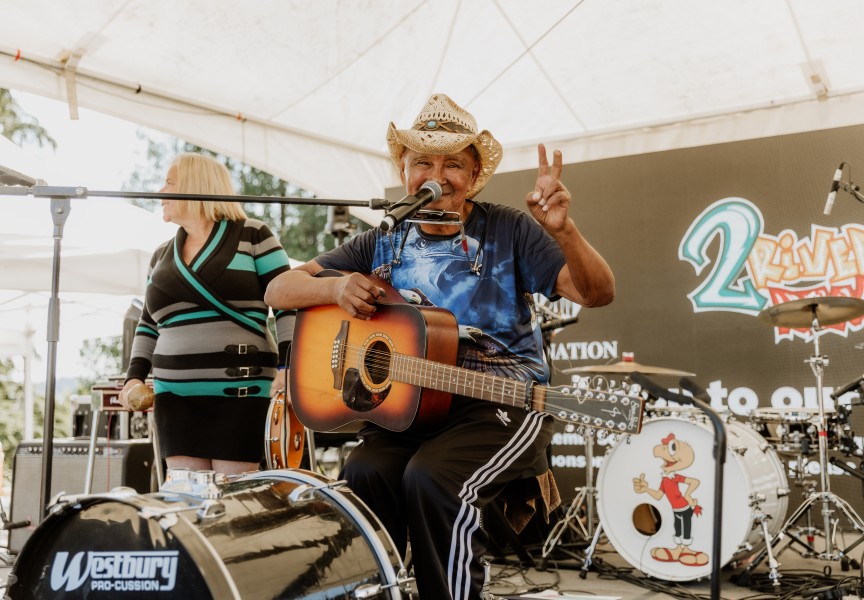The tide was out in the early morning as Genevieve Mack ran towards her grandmother who was carrying a burden basket loaded with wood.
While returning home on the east end of Vargas Island, they walked past a row of canoes that neatly lined Yaksis, otherwise known as a white-sandy beach.
All of the old growth on the surrounding mountains remained intact and there were no speedboats driving by or airplanes buzzing overhead.
“It was so peaceful,” she said.
Now, when the 77-year-old travels from her home in Ahousaht past the island she feels “homesick.”
As a young girl, it was normal for Mack’s family to move with the changing seasons. Their summers were spent on Vargas, and in the winter, they would canoe to Meares Island to seek protection from the nasty winds and angry waves.
They were a whaling people, known for living on the ocean-side of their territory’s islands, said Nate Charlie, Mack’s son and Kelsmaht Nation’s Ha’wilth (chief).
“True-blue ocean-going people,” he said.
Despite continuing to be recognized as its own nation, Kelsmaht was amalgamated with Ahousaht First Nation in December of 1950. Along with Qwatswiaht, they have been operating as one nation ever since, said Charlie.
Today, around one-third of Ahousaht’s members are Kelsmaht. The other Kelsmaht Ha’wiih are recognized as Eugene Atleo, Hohomyiis and Kanupit, according to Charlie.
While families still return to the island to camp in August, only one remains living in the traditional summer village on Vargas.
Lennie John and Marcie Callewaert relocated from Ahousaht to the quiet island in the fall of 2020, after having spent the previous four years dreaming about making the move. Their off-grid lifestyle on Vargas became a reality when they purchased a tiny wooden cabin in the spring of 2020 that was built by John’s parents in the ‘80s.
“My mom and my dad put their blood, sweat and tears into that cabin,” said John.
Not only does their new home connect John to his late parents and ancestors, he said it has been a real turning point in his journey towards healing. As a child, John “served” five years at Christie Residential School when it was located in Tofino. To this day, he is triggered by his memories of screaming children.
Like many others, John turned to alcohol as a coping mechanism, but after suffering from health-related issues, the 52-year-old became sober two years ago. Callewaert attributes the “little place of peace” as a fundamental anchor for John to continue his healing work.
“This place means the world to me,” he said.
Remnants of the old village remain scattered throughout the forest behind their home – mostly metal objects, such as a penny from 1914, fishing weights and pots and pans, said Callewaert.
Other than the three wolves that frequent their beachfront, no-one else occupies Yaksis. Yet, the presence of John’s ancestors remains.
“When you're there alone, you'll hear voices,” said Callewaert.
They aren’t spooky or threatening, she reassured.
“It’s as if someone is having a conversation nearby,” she said.
The constant “chit-chat” from his ancestors has been a surprising source of comfort for John.
"It's motivation for me,” he said. “Knowing that we’re not alone here.”
Kelsmaht and Ahousaht have always been closely tied, both in proximity and in war.
Ahousaht used to occupy the northwest corner of Vargas. Kelsmaht lived nearby, situated on the south end of the island, explained Dave Jacobson, an Ahousaht historian.
Their relationship was solidified in the early 1800s, when Kelsmaht and the neighbouring Qwatswiaht Nation joined Ahousaht in waging a war against Otsosaht Nation. The Megin and Atleo Rivers flowed within Otsosaht’s traditional territory and they were unwilling to share their resources, recounted Lewis George, Ahousaht’s Tyee Ha’wilth (head chief).
“Every time our people would try and get some fish from the rivers, [Otsosaht] would slaughter them,” he said.
The war “marked a real kinship” between Ahousaht and Kelsmaht, who were victorious as Otsosaht is no longer a recognized nation, said George.
“Prior to contact, we were a confederacy,” said Jacobson. “Each nation had territory and had harvesting rights …. but the nations worked together. It’s not something that is new. It was something that was always there.”
The calamity was cause for the two nations to become even closer, as Ahousaht stepped in to support the widowed Kelsmaht women, many of whom had previously married into the tribe from Ahousaht.
The official amalgamation of the two nations in the 50s was in the federal government’s interests, said Jacobson. By combining smaller communities with larger nations, it made it easier for the government to provide services to homes, such as sewage and water, he said.
Around that time, families started moving off Vargas Island to Maaqtusiis, an Ahousaht village site on Flores Island. Paired with a limited fresh water supply and without anywhere to keep their motor boats safely anchored on Vargas, families have remained in Maaqtusiis ever since, said George.
It’s difficult for Charlie to wrap his head around how different the coastline would have looked just one generation ago. Thinking back to his mother’s life as a young girl, he shook his head in bewilderment.
“It’s like a time-machine,” he said. “We’ve been put into these permanent homes where we’re not traveling with the food anymore. There was a lot of teachings and culture tied with that movement."
Mack still has vivid memories of at least seven homes that used to stand on Yaksis when she was 5. Instead of a smokehouse, her grandmother used the gathered wood to light a fire on the beach. There, they would spend hours putting clams or herring on sticks and hanging them to dry over the open embers.
“I feasted on it for myself and then shared it with the ancestors,” said Mack. “It was awesome.”
Just the other week, John and Callewaert shared in a similar tradition. With a view of Opitsaht floating in the distance, the couple cooked a salmon kluup-chus. It’s a traditional style of cooking salmon, where the fish is butterflied open and secured between cedar sticks before being placed in the smoke over the fire.
Despite having only lived on Vargas for just over six months, neither can imagine living anywhere else.
John said he is grateful to have found Callewaert, who was willing to follow in his parent’s footsteps by living in the same space they once occupied.
For them, it was about “getting back to the basics,” said Callewaert. “And getting back to the land.”

